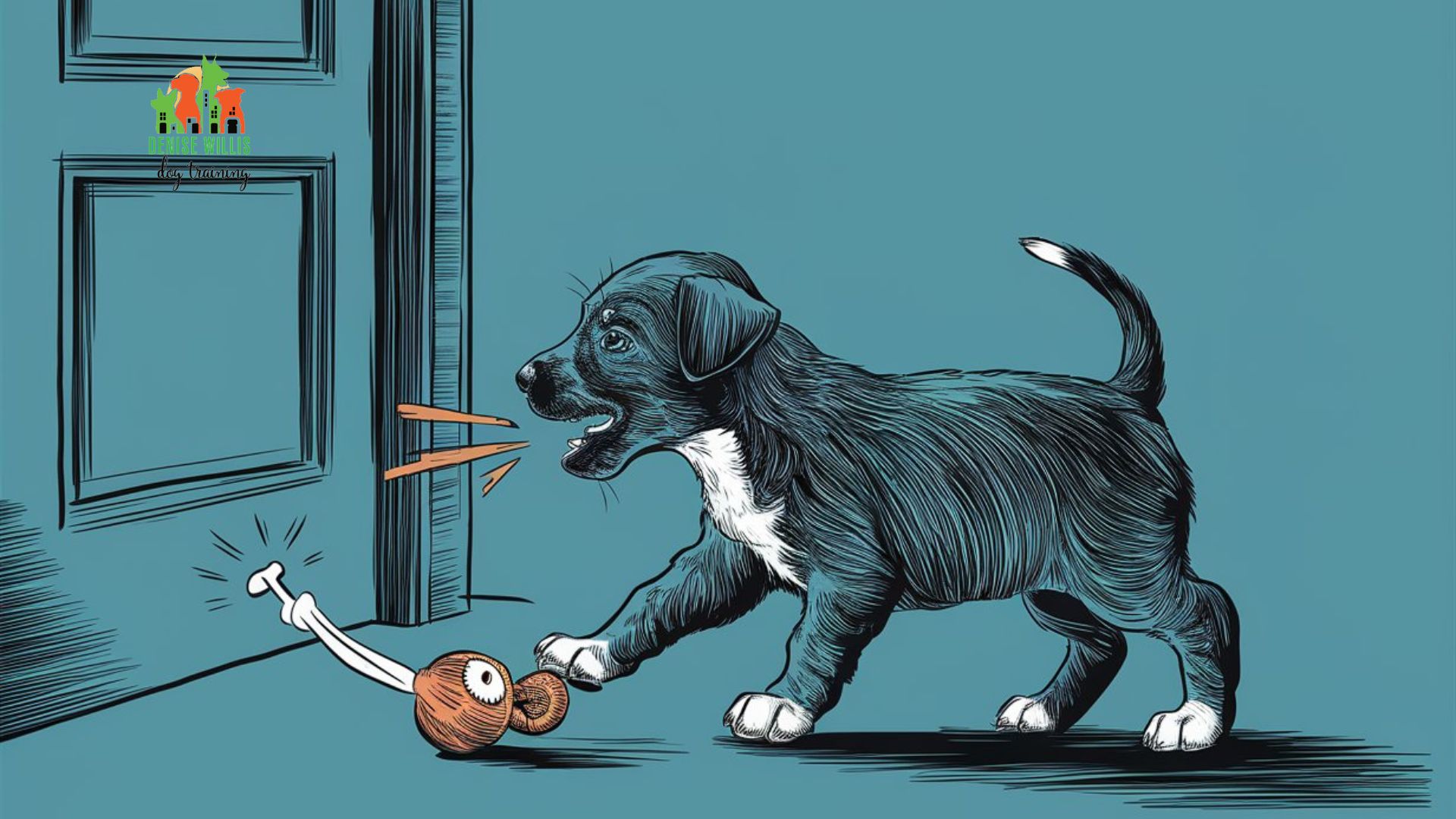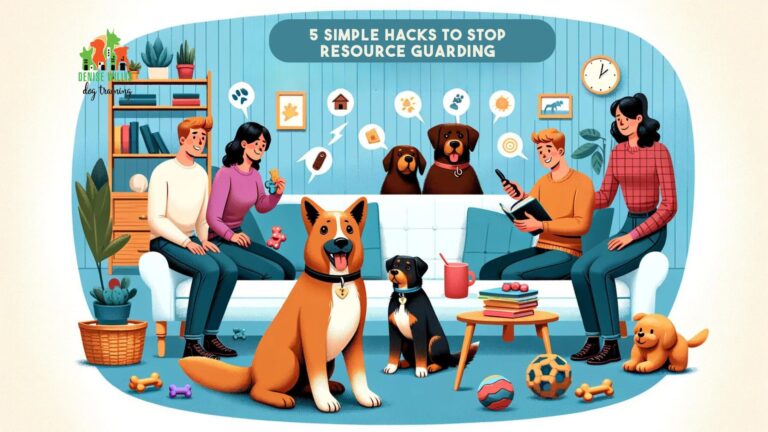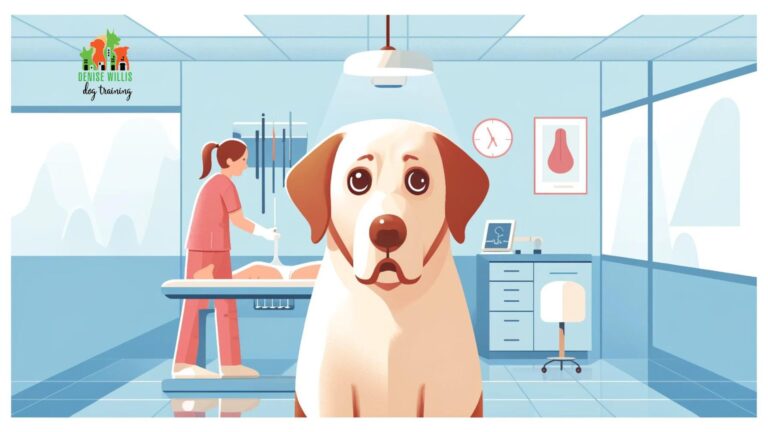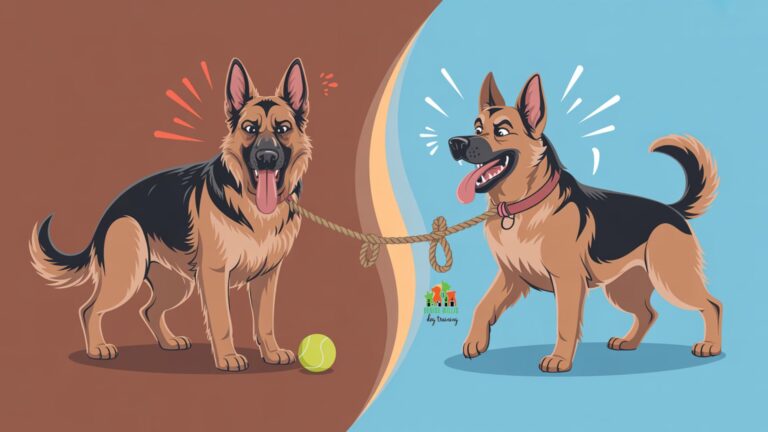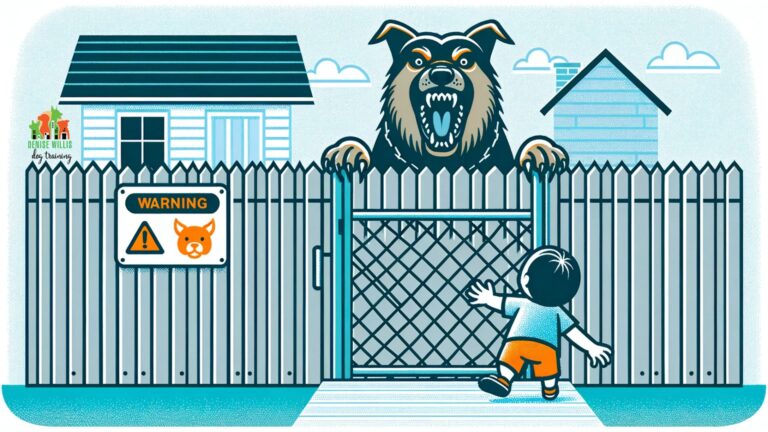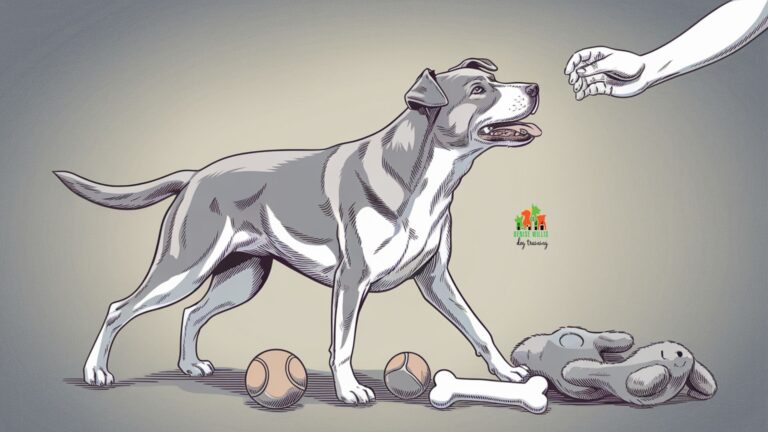10 Proven Techniques to Tame Your Aggressive Puppy
📍 Service Area Notice: DW Dog Training provides in-person training services exclusively in the Greater Baltimore area. While our blog content is designed to help dog owners internationally, our hands-on training services are locally focused. For readers outside our service area, we hope you find value in our articles and welcome you to reach out with questions!
Dealing with an aggressive puppy is a nightmare, right? One minute they’re adorably chewing on a toy, the next they’re aggressively chewing through your favorite shoes. Those tiny razor teeth can do some serious damage.
But don’t worry, there are proven techniques to tame that furry little monster into the obedient, loving pup you’ve always wanted. From firsthand experience (and a couple accidental scars), I’m going to share ten of the most effective ways to put that biting and barking in check.
Technique #1: Redirect with Toys or Treats
Let me paint a picture for you. Your puppy is chilling on the couch when a loud noise outside makes them spin into a frenzy – growling, barking, raising hell. We’ve all been there.
Instead of yelling or punishing that aggressive reaction, you’ll actually reinforce it by adding more negativity to the situation. A much better approach? Redirection using a toy or treat.
As soon as your pup starts going crazy, immediately divert their attention to something positive. An irresistible squeaky toy or a couple of tiny treats should do the trick. By redirecting their focus, you’re quickly flipping that aggressive switch in a constructive way.
I remember when I was training a pup named Rufus who would bark like a maniac anytime the mailman came. A few strategically placed treats later, and he was too busy licking peanut butter to raise a fuss. Redirection is key for managing triggered aggression.
Technique #2: Positive Reinforcement
This one’s all about rewarding the behavior you want to see. Positive reinforcement is one of the most powerful tools in your puppy training arsenal. It’s like giving them a little treat-filled pat on the back for being a good doggo.
Anytime your pup stays calm and relaxed in a situation that might normally make them aggress, reward that good boy/girl with praise, pets, or healthy treats. Hearing “yes!” and getting a tasty morsel is way more effective than scolding them when they’re simply afraid or overstimulated.
The more you reinforce desirable non-aggressive actions like sitting or holding eye contact, the more your pup will understand that’s the kind of behavior that gets them good things. Consistency is key with effective puppy training.
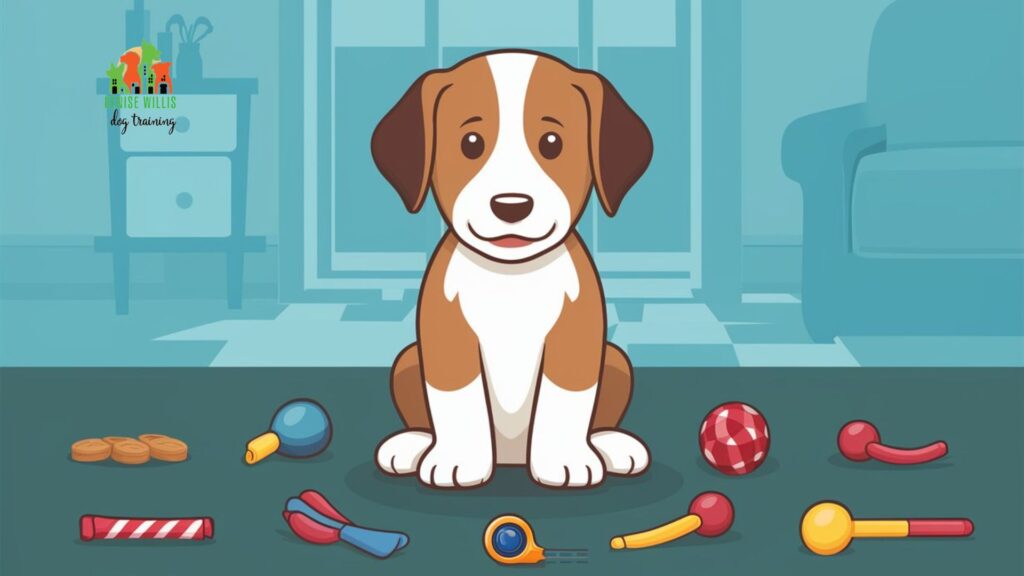
Technique #3: Startle Over Punish
Now, I know what you might be thinking – “When my puppy is freaking out, I just need to put them in their place!” But harsh punishments like yelling or physical discipline do way more harm than good and can actually reinforce fear-based aggression.
Instead of punishing your pup, use a startling noise or motion to humanely interrupt aggressive behavior. Something as simple as a loud clap, whistle, or spray bottle mist can be enough to snap them out of an overly hyped state.
The key here is to startle, not scare. You don’t want your puppy to fear you, just a brief pause on the aggression so you can then reset with a more positive redirection method like luring with a toy or treat.
That startle resets their brain to a calmer status, so you can quickly flip the script rather than ramp up their aggressive energy. It’s a much better alternative to punitive measures that increase anxiety.
Technique #4: Early Socialization
Preventing aggression is way easier than treating it after the fact. One of the most effective preventative measures is proper socialization during your puppy’s critical periods.
Think about it – if every new person, sound, and environment is seen as a potential threat, it’s no wonder puppies get aggressive out of fear and uncertainty. Exposing them to tons of new (but positive) experiences early builds their confidence.
From 3-12 weeks old, you’ll want to socialize the heck out of your puppy. Invite friends over, take them on car rides, and let them explore new sights and smells under your supervision. The more they can navigate unfamiliar situations without danger, the less frightening things become.
My buddy’s pup Bella wasn’t socialized much as a puppy, and now she’s terrified of anything out of the ordinary, which triggers major aggressive barking. It’s a vicious cycle you can avoid through early socialization.
Technique #5: Plenty of Exercise and Mental Stimulation
You know how human babies get crazy when they’re overtired? Puppies are the same way. Except their zoomies manifest as biting, jumping, and whining rather than throwing toys from the crib.
An overly energetic, understimulated puppy will seek outlets for all that pent-up angst, which can come across as aggression. Making sure your puppy gets sufficient physical and mental exercise is crucial for curbing rough behavior.
Every morning, I take my pup on a nice long walk around the neighborhood to drain some of that hyper puppy energy first thing. We mix in some retrieval games or a quick obedience training session to engage their brain too. A tired puppy is a well-behaved puppy!
On top of that physical activity, you’ll want to rotate through different food puzzle toys, chews, and playtime throughout the day. Keeping their minds just as tired as their legs is the name of the game when it comes to aggression prevention.
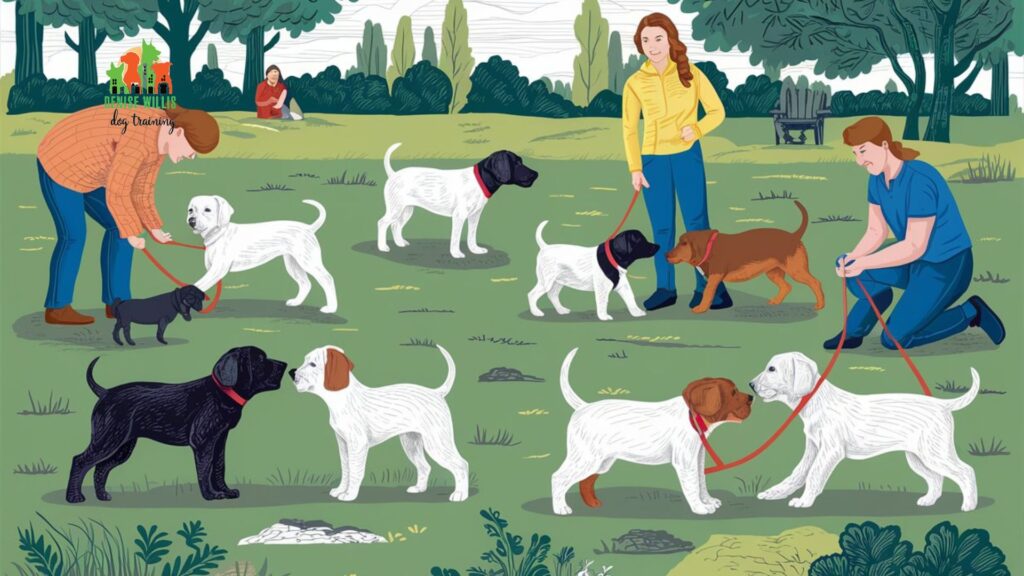
Technique #6: Use Calming Aids
If your puppy is particularly anxious or aggressive, calming aids can be extremely helpful in taking the edge off as you work on training. Things like pheromone diffusers, anxiety wraps, and supplements can relax them just enough to make obedience more possible.
Speak to your vet about safe calming options based on your puppy’s individual needs. You’ll be amazed at how much easier training can become when your hyper pup is slightly more zen!
Technique #7: Enroll in Puppy Classes
As convenient as online articles are, nothing beats the help of an experienced professional when it comes to curbing puppy aggression. Group puppy classes are a fantastic way to learn effective techniques hands-on.
With the guidance of a qualified instructor using positive reinforcement methods, you can get expert advice while your pup learns obedience and socialization in a controlled setting around other puppies. It’s a win-win!
Technique #8: Be Patient and Consistent
I can’t emphasize this one enough – taming an aggressive puppy takes an enormous amount of patience and consistency on your part. You’re essentially retraining their brain, which doesn’t happen overnight.
If you start slacking on the daily training, rewarding, exercising, etc., any progress you’ve made can quickly regress. Changing an aggressive puppy’s behavior is a full-time commitment, but one that’s absolutely worth it in the end.
Technique #9: Use Professional Help if Needed
For severe cases of puppy aggression, don’t be afraid to call in reinforcements. Certified professional dog trainers that specialize in aggression can provide the support and customized plan you need.
From private lessons to temporary board-and-train programs, these experts have seen and solved it all. Don’t let excessive aggression drag on until it becomes an ingrained, dangerous issue in your adolescent dog.
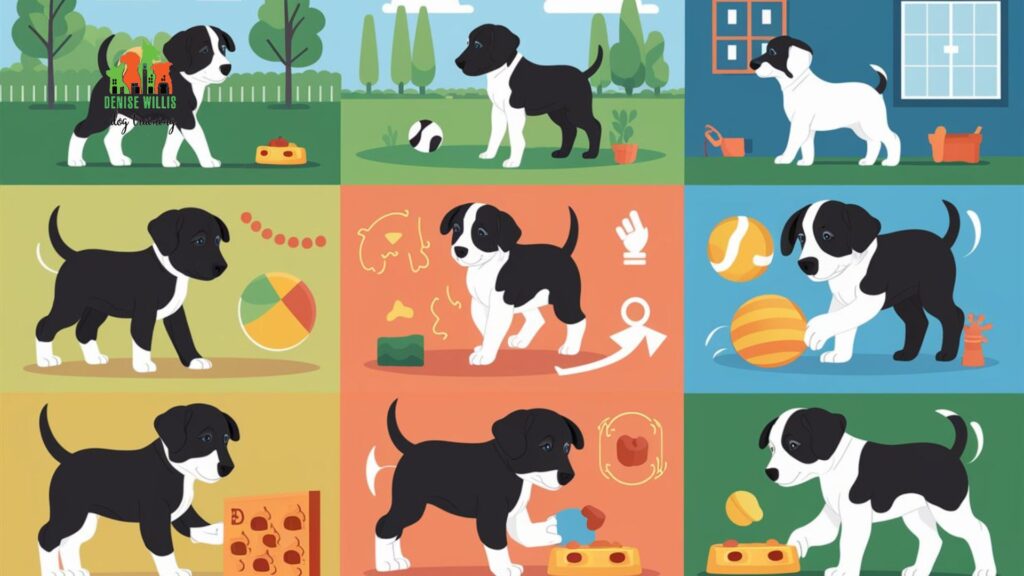
Technique #10: Stay Calm and Confident
Last but not least, maintaining a calm, confident energy around your puppy is key to successfully addressing aggression. If you’re constantly punishing, yelling, or giving off anxious vibes, your pup will only mirror that frantic energy right back.
Take a deep breath, follow the proven redirection and reward techniques, and trust the training process. With patience and the right mindset, you can shape an obedient, friendly pup in no time!
With those ten techniques, you’re well-equipped to tame even the most aggressive of puppies. But if you still need some extra support, don’t hesitate to contact the professionals at DW Dog Training. We’re here to guide you and your furry friend every step of the way!
Key Takeaways:
- Redirect aggressive behavior using high-value toys or treats
- Reinforce calmness with praise, petting, and treat rewards
- Use startling sounds/motions to interrupt aggression, then redirect
- Socialize your puppy early and often to build confidence
- Provide ample physical and mental exercise to avoid boredom aggression
- Explore calming aids to take the edge off anxiety
- Enroll in puppy training classes for expert guidance
- Be patient and consistent – progress takes time!
- Don’t hesitate to use professional trainers for severe cases
- Stay calm and confident – your pup will mirror your energy
Frequently Asked Questions About Puppy Aggression
Q: When do puppies typically start showing aggression?
A: Most experts agree that puppies can begin displaying aggression as young as 8-10 weeks old as they start exploring the world around them. Early socialization during this critical window is key to preventing fear-based aggressive behaviors from developing.
Q: Are certain breeds more prone to aggression?
A: While some breed tendencies do exist, behavior is largely shaped by environment and training. Any puppy can develop aggression issues without proper socialization and outlets for their energy and stimulation needs met.
Q: What should I do if my puppy bites me?
A: Don’t punish them, as this can reinforce the biting behavior. Instead, calmly disengage by walking away until they settle, then try redirecting with a toy or treat. Puppy biting is normal mouthing behavior but can be curbed with consistent redirection.
Q: Will my aggressive puppy eventually grow out of it?
A: Puppy aggression tends to peak during the adolescent chewing phase between 6-12 months. While some calmness does come with age, bad habits can become ingrained without consistent positive reinforcement training. It’s important to address aggressive behaviors early on.
Q: When should I seek professional help for my puppy’s aggression?
A: If your puppy’s aggression is severe or escalates despite your best training efforts using positive techniques, don’t hesitate to reach out to a certified professional dog trainer who specializes in aggression cases. They can provide more tailored guidance and support to get your pup’s behavior on track.
With the right techniques under your belt, you’ve totally got this! Say goodbye to those torn-up shoes and menacing little growls. An obedient, loving, friendly puppy is just around the corner. But if you need any help along the way, the puppy training experts at DW Dog Training are just a call away.

